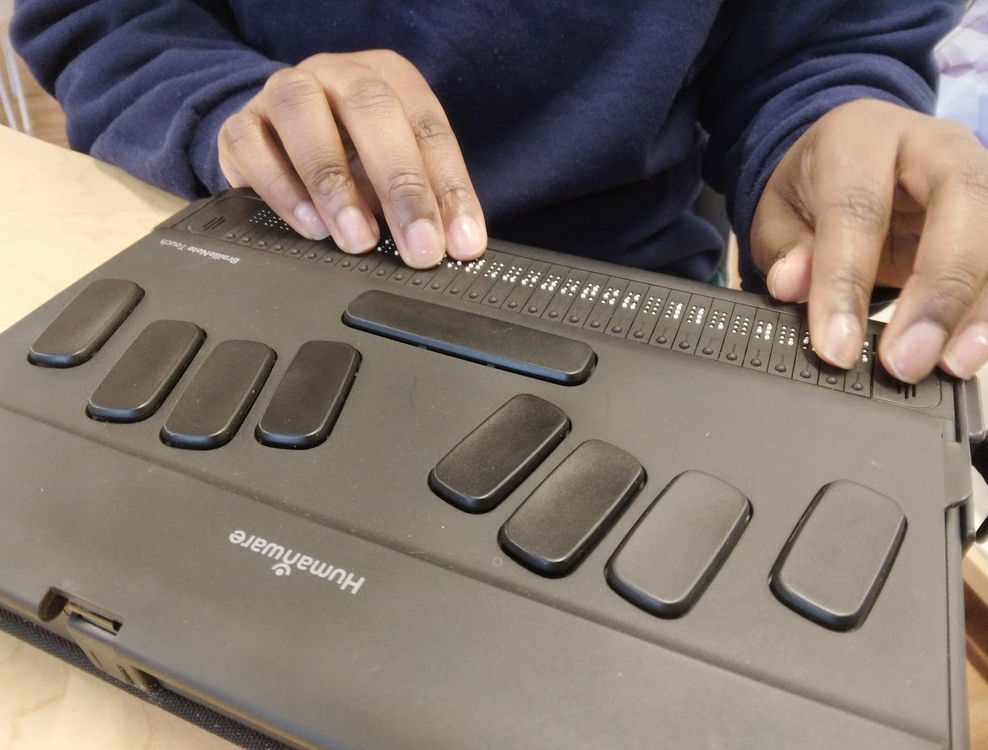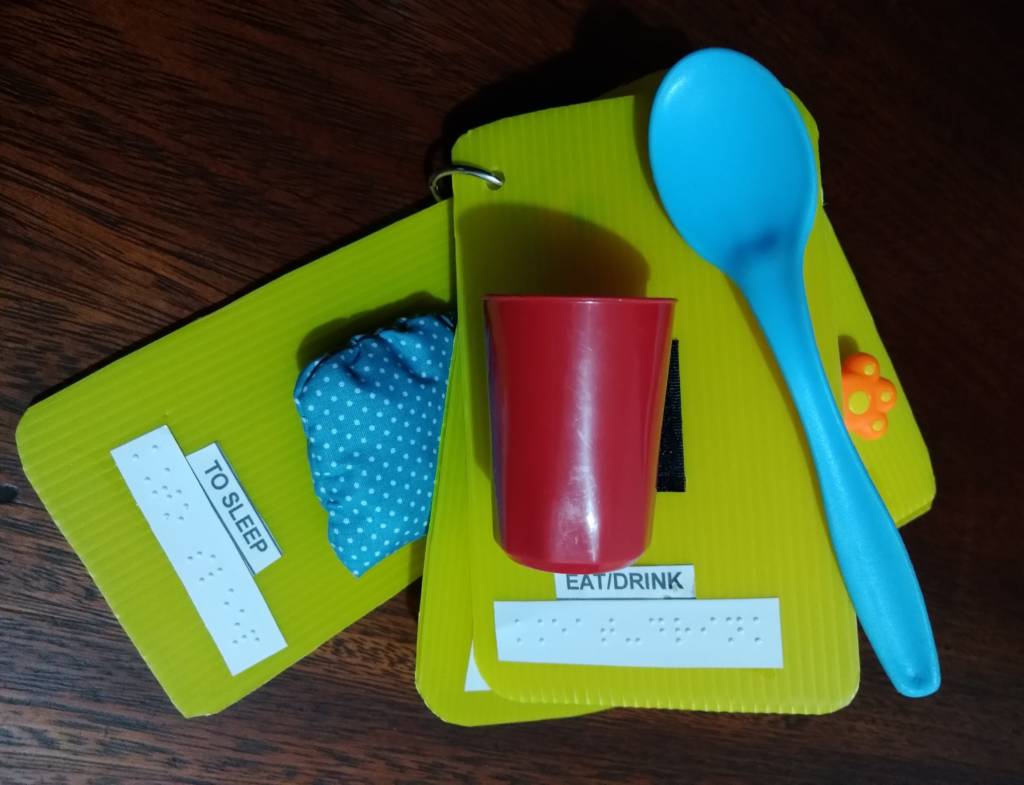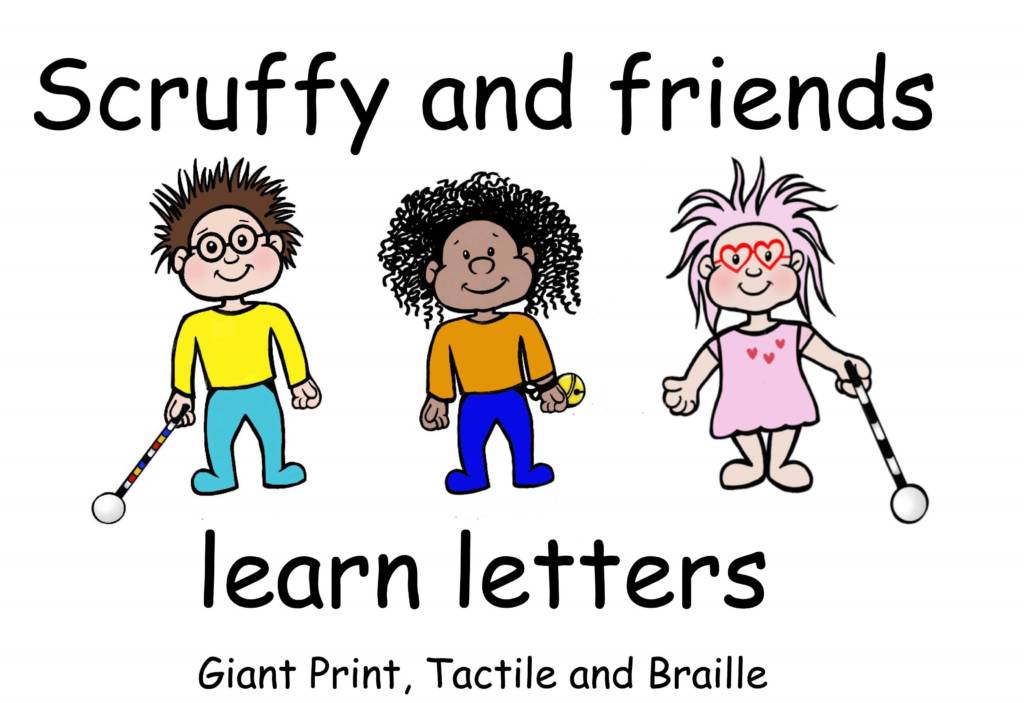What is Dual Media?

Dual Media refers to the use of both print and braille simultaneously as modes for reading and writing. This decision is usually made by a student’s team after a Learning Media Assessment has been completed. Some eye conditions in which there is a gradual loss of vision may be a factor in choosing this option. In some cases, print and braille are both taught from the beginning, while in other cases print readers are taught braille later in their educational careers.
How should a decision be made whether to use print or braille or both?
All decisions about what medium to use should begin with a learning media assessment to determine what the best choice is for an individual student. Some students will be braille readers, others will read print, and others will use both (dual-media). Some times students begin as print users and then a decision is made at a later time to introduce braille. For other students, print and braille may be introduced simultaneously.
The law states in IDEA (Individuals with Disabilities Education Act 2004, Section 300.324 (a)(2)(iii):
“In the case of a child who is blind or visually impaired, provide for instruction in Braille and the use of Braille unless the IEP Team determines, after an evaluation of the child’s reading and writing skills, needs, and appropriate reading and writing media (including an evaluation of the child’s future needs for instruction in Braille or the use of Braille), that instruction in Braille or the use of Braille is not appropriate for the child;”
The team must therefore carefully weigh the decision about which medium is most effective for a given child.
In his article Clarification Regarding the Choice of Braille as a Reading and Writing Medium, Dr. Phil Hatlen, former Superintendent, Texas School for the Blind and Visually Impaired, discusses the topic of how a decision is made among learning media. He notes that there are four categories of students: print readers, braille readers, students with additional disabilities who may use auditory strategies or tactile symbols, and students with enough vision to do some tasks visually, but for whom a Learning Media Assessment will help to determine the best approach.
When should tactile learning strategies be used?
It’s important to note that some children may be using their vision primarily but actually would benefit from tactile learning strategies. One component of an LMA is often observing the child and tabulating which sensory channel is used most often. Especially for children who are losing their vision, and haven’t had a lot of exposure to or practice in using their hands for learning, it will take direct instruction to increase their tactile skills to an efficient and useful level. Decisions on literacy media must take a comprehensive approach to current and future sensory abilities.
What factors contribute to the decision to use dual media?
1. Efficiency
Some students have enough vision to be able to read print, but they require a great deal of time and effort in order to do so. If the student requires an extremely large font size that makes it difficult to read with fluency or comprehension, then braille may be a better option. For these students, braille may be a more efficient medium for certain tasks, while print may be preferable for other tasks. For example, braille may be a better option for reading long passages, but print may be useful when shopping or moving about in the community.
2. Prognosis
If a child has a degenerative eye condition, and his or her vision is likely to worsen over time, it may be desirable to introduce braille at an early age.In this situation teachers and other members of the education team must be sensitive to the needs of the student and the family. When vision loss is an immediate reality, there are many emotional reactions to deal with and it may take time for parents and children to get used to the idea.
3. Visual Fatigue
Some students may become extremely tired and experience headaches or eye strain from reading print. Even though they may be able to read print, for these students it may be desirable to have an alternative.
What are the advantages and disadvantages to a dual-media approach?
A dual-media approach gives a student more flexibility, so that he or she can switch back and forth as circumstances change. At times print may be the preferable medium, while braille may be more efficient for reading with greater speed or ease. One of the primary disadvantages of dual media is time. Students who learn both print and braille need to have instruction in each medium, and some educational teams find this to be a significant challenge.
While there is visual information readily available for students to continuously be exposed to visual stimuli, braille is much less present. While building braille proficiency, the team must deliberately embed braille exposure into everyday environments as well as within literacy materials. Braille must be available in many contexts long before the student may have the skills to use it proficiently, in order to to build awareness, to practice using the fingers intelligently, and to increase its perceived value in the student’s life.
Some parents and students voice a belief that they will “look blind” if they learn braille, and thus may resist it initially. For others who are losing their sight, there may be significant emotional adjustment necessary before a student is ready to learn braille. In these type of situations where a student is resistant to learning braille, it may be helpful to talk to an adult mentor who has been through a similar experience. Many adults who have lost their vision express regret that they did not learn braille at an earlier age.
Additional Resources
- Clarification Regarding the Choice of Braille as a Reading and Writing Medium
- Creating the Dual Media Integration Plan
- Dual Media Learners: Instructional Strategies and Assessment
- Teaching Braille to Students Who Already Have a Print Literacy Foundation
- Print or Braille? Megan Reads Both, By Marla Palmer, Future Reflections, Vol. 28, No. 1 (2009)



